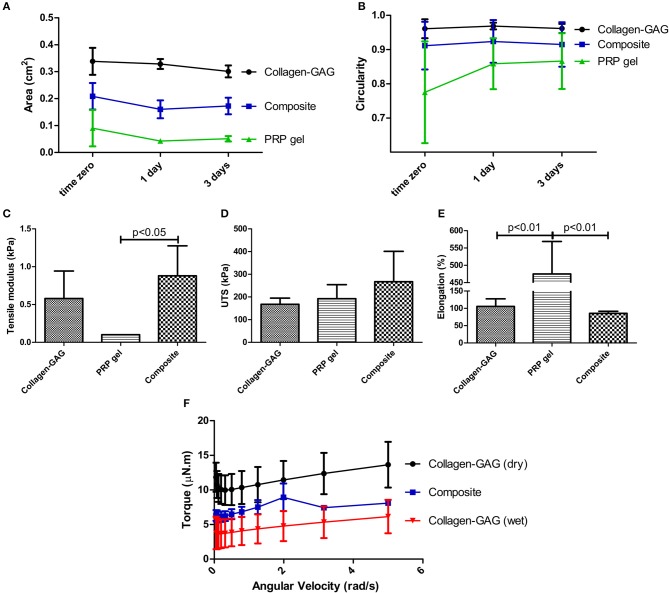Figure 2.
Composite scaffolds acquired the mechanical properties of collagen-GAG scaffolds. Area (A) and circularity (B) of the samples showed that the composite scaffolds acquired a similar shape compared to collagen-GAG scaffolds, as well as mechanical properties, as observed in tensile modulus (C), ultimate tensile strength (D), and elongation (E). Rheometry shows that the composite scaffold had increased torque values compared to wet collagen-GAG scaffolds at the range of angular velocity tested (F). Data are expressed as mean ± standard deviation. Samples had significant different areas (A) at all time-points; and significant differences in circularity (B) were observed between PRP gel samples compared to both collagen-GAG and composite scaffolds at time zero, as determined after two-way Anova with Bonferroni post-test analysis. Tensile modulus (C), ultimate tensile strength (D), and elongation statistical analysis was performed with one-way Anova with Tukey's Multiple Comparison Test.

